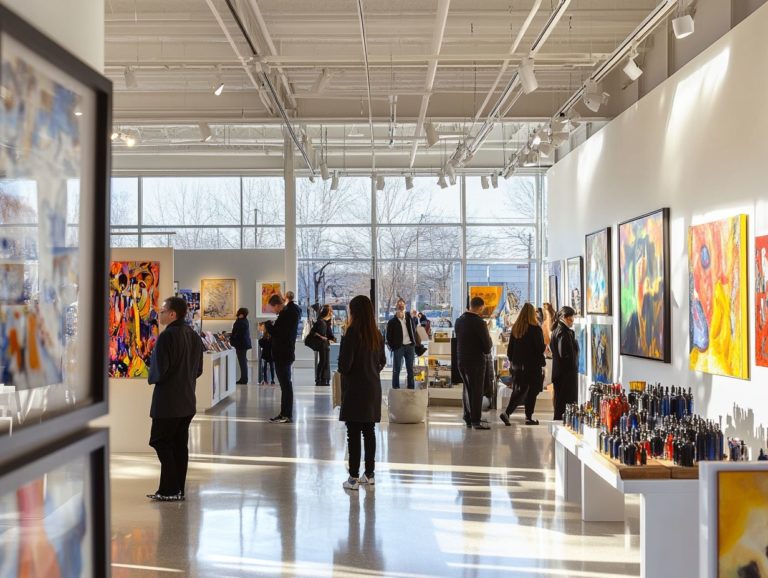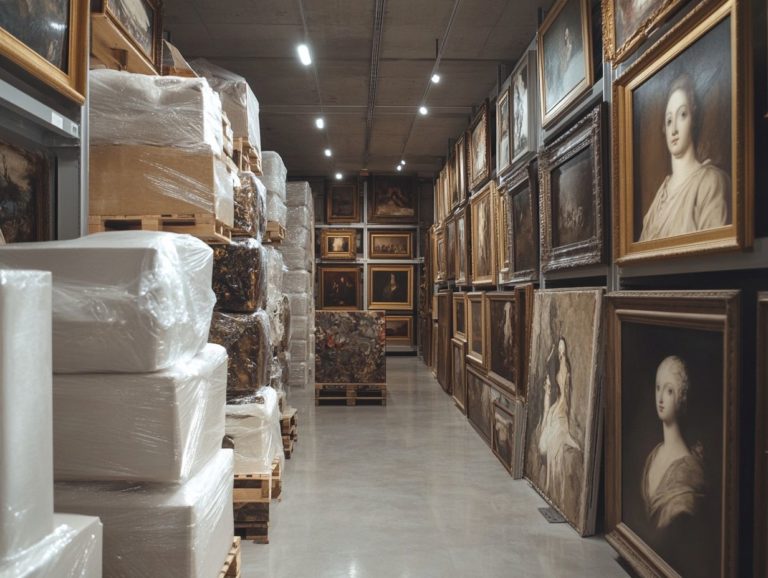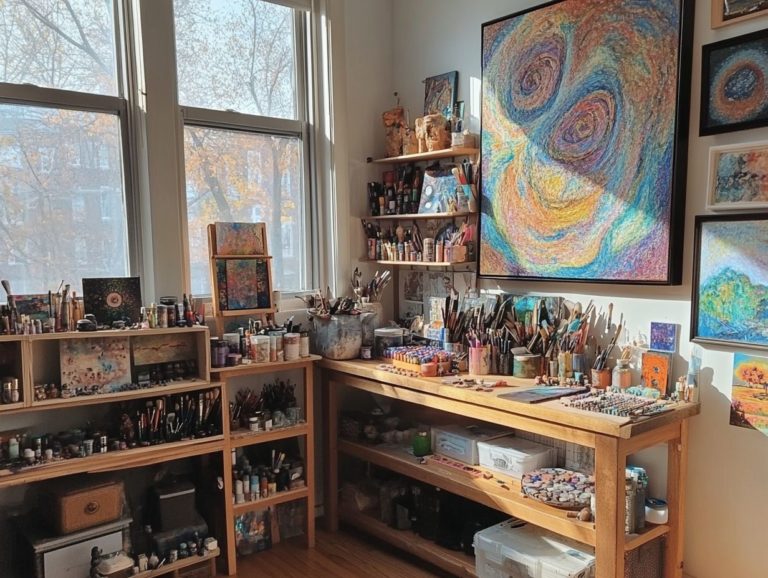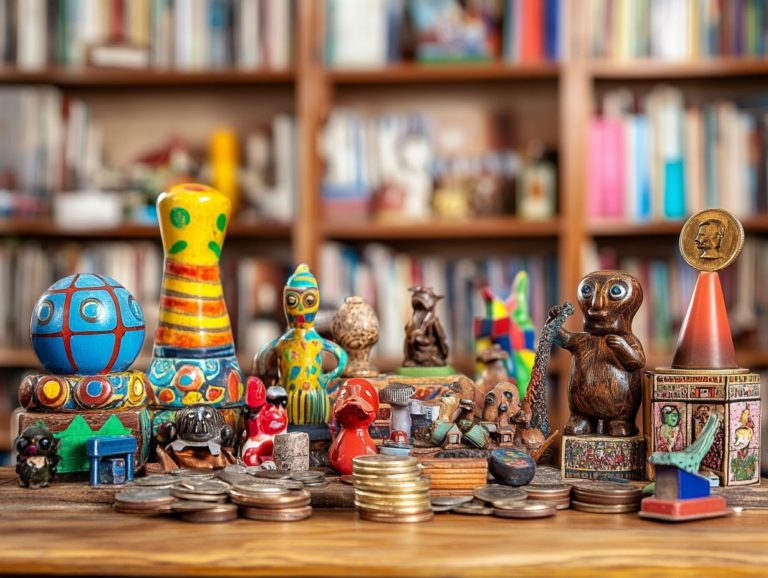Art Collecting: A Family Tradition
Art collecting is more than just a hobby; it’s a vibrant family tradition that enriches lives for generations! Dive into this exciting journey with us.
Explore the rich history of art collecting within families. Discover how this practice began and evolved over time. You ll learn about the emotional and financial benefits of building your collection, the diverse forms of art you can collect, and practical tips for starting your own journey.
You will also gain valuable insights into how to preserve and display your prized pieces. Whether you re a seasoned collector or just stepping into this vibrant world, you ll find something to inspire and guide you.
Contents
- Key Takeaways:
- The History of Art Collecting in the Family
- Benefits of Art Collecting
- Types of Art Collected
- Tips for Starting an Art Collection
- Preserving and Displaying Your Art Collection
- Frequently Asked Questions
- What is ‘Art Collecting: A Family Tradition’?
- How does ‘Art Collecting: A Family Tradition’ start?
- What are the benefits of ‘Art Collecting: A Family Tradition’?
- Can anyone start ‘Art Collecting: A Family Tradition’?
- What are some tips for starting ‘Art Collecting: A Family Tradition’?
- How can ‘Art Collecting: A Family Tradition’ be passed down to future generations?
Key Takeaways:
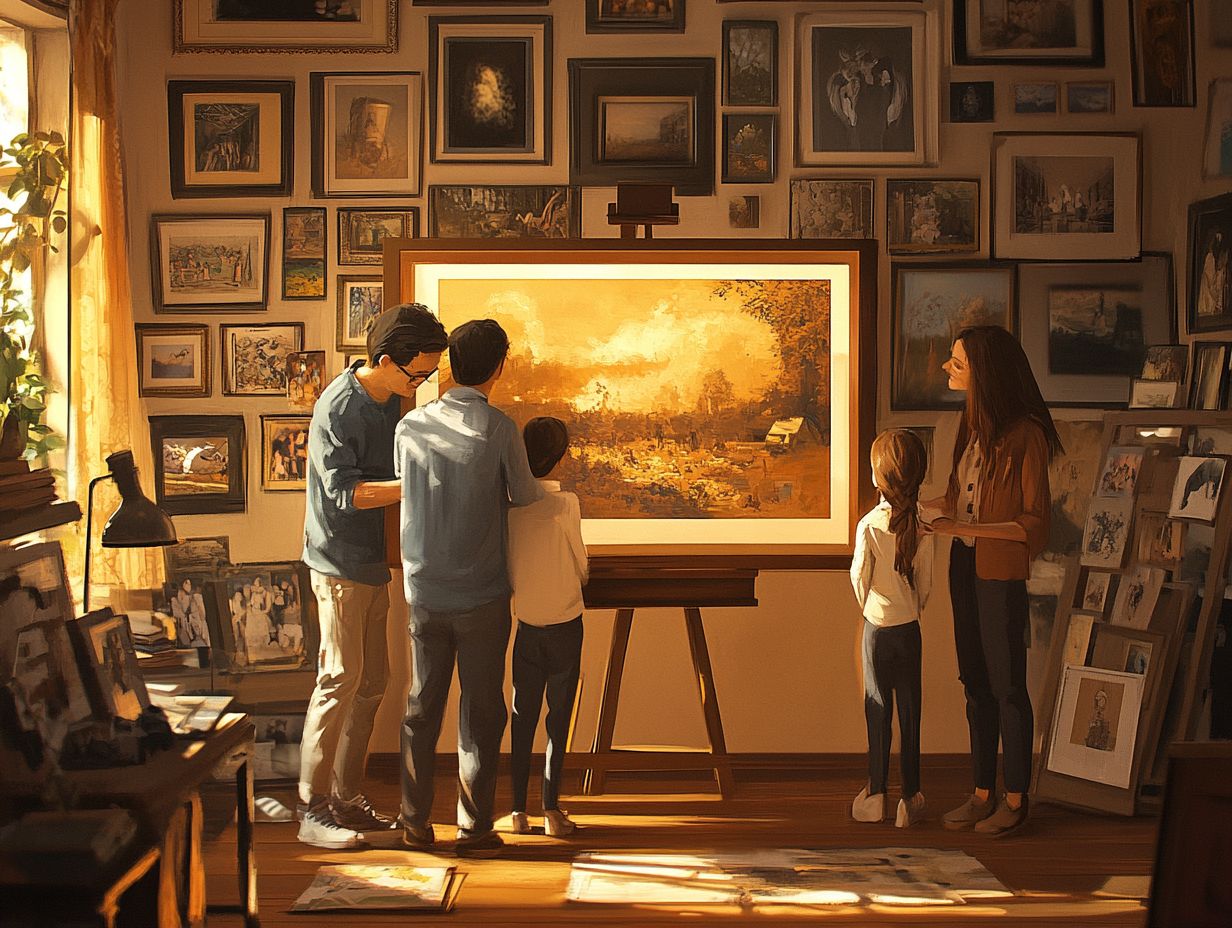
- Art collecting is a meaningful family tradition.
- It offers emotional and financial benefits.
- Explore different mediums and styles to find what speaks to you.
The History of Art Collecting in the Family
The history of art collecting in your family is a rich tapestry woven through generations, showcasing emotional connections and cultural capital that original art can infuse into your personal journey.
Family traditions often lay the groundwork for art appreciation. Tales of esteemed collectors like Herbert and Dorothy Vogel and Thomas Merton inspire you to seek out unique pieces and explore a diverse array of styles.
This journey, marked by personal stories and the cultivation of relationships within the art community, highlights the profound value that art holds in shaping your identity and nurturing a meaningful connection with visual culture.
How the Tradition Started
The tradition of art collecting likely began as a way for families to offer patronage to artists, aiming to support and preserve the creative expressions of emerging talents. This practice enriched the cultural landscape and reflected a deep appreciation for artistry that went beyond mere ownership.
Initially, it was a privilege reserved for the wealthy elite, who understood the historical significance of original art as a testament to their legacy and values. As art evolved through various movements, so did the motivations for collecting. Individuals began to view their collections not just as investments, but as genuine expressions of identity, sentiment, and a personal connection to the broader historical narrative.
Today, collectors increasingly value the stories behind the pieces, recognizing that each artwork is a window into the time and culture from which it emerged.
Benefits of Art Collecting
The benefits of art collecting go far beyond visual appeal; they offer you profound emotional connections to unique pieces while also presenting a potential financial investment in the art market.
Collecting original art doesn t just elevate your living space; it immerses you in the vibrant world of art galleries and auctions. This engagement becomes a valuable opportunity for you to educate yourself about investment strategies and the ever-evolving trends in contemporary art.
Emotional and Financial Benefits
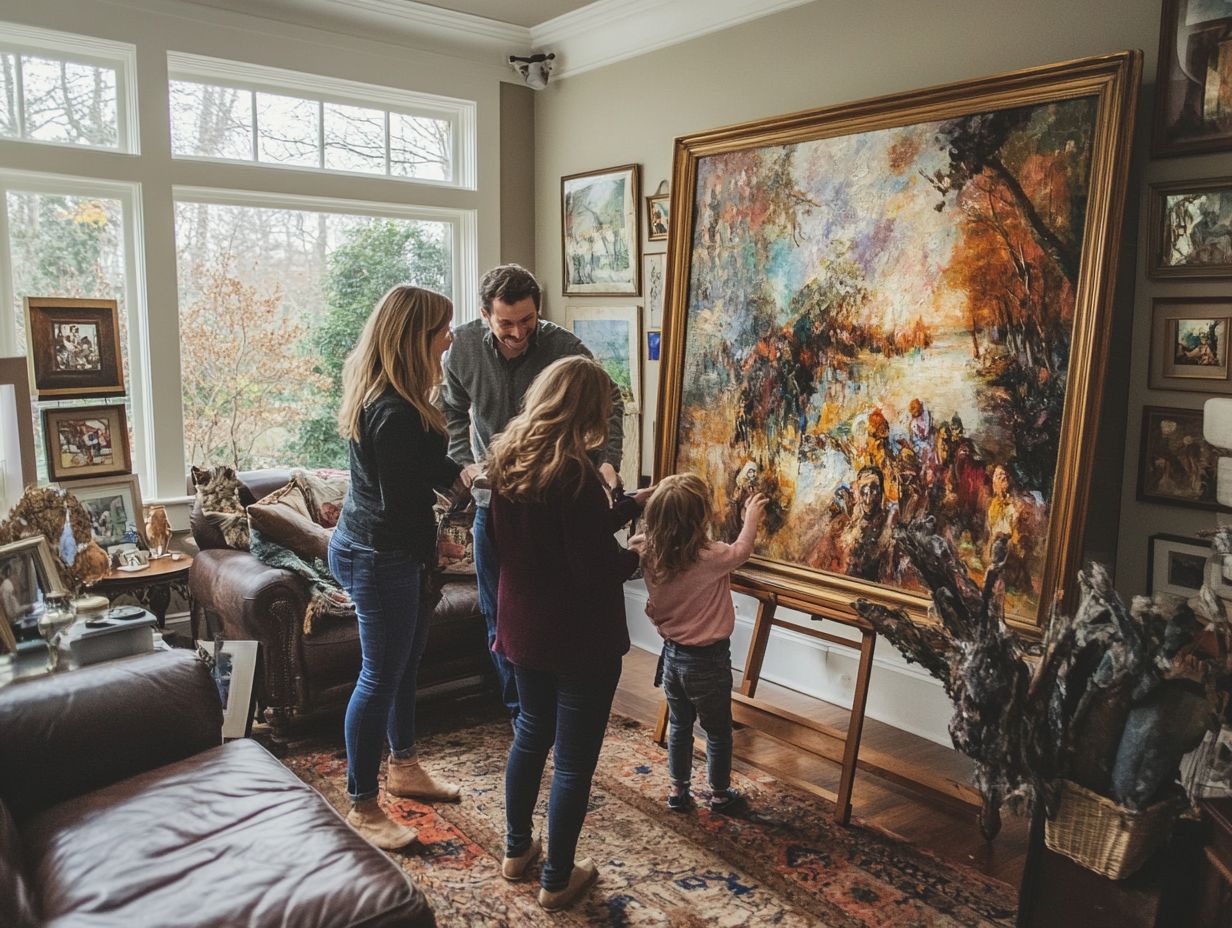
An emotional connection to the art you collect can lead to a profound realization of personal identity and significantly enhance your overall quality of life. The financial benefits that come from the appreciation of artwork over time can t be overlooked.
This journey allows you to express your tastes and values, crafting a living narrative that reflects your experiences.
For instance, you might find immense joy in showcasing pieces that resonate with your cultural heritage. This can spark conversations and build connections with others who share similar backgrounds.
As you educate yourself about market trends and artists, your acquisitions transform from mere decorative items into strategic investments. By understanding the historical performance of certain artists or movements, you can make informed decisions that enrich your emotional landscape while potentially bolstering your financial portfolio.
Types of Art Collected
As an art collector, you likely appreciate a rich tapestry of artistic expressions, from contemporary works to traditional pieces and folk art.
Each type offers its own unique narratives and visual storytelling, resonating deeply with your personal journey and the overarching theme of your collection.
Exploring Different Mediums and Styles
Exploring various mediums and styles in art collecting allows you to appreciate the vast spectrum of artistic expression. From the intricate techniques of traditional art to the innovative approaches of contemporary and self-taught artists, every medium offers a fresh way to see the artist’s vision.
This journey deepens your understanding of the creative process and invites you to connect with the emotional narratives woven into each piece.
Each medium whether it s painting, sculpture, photography, or mixed media provides a unique lens through which the artist s perspective comes into focus.
For many collectors, discovering how different styles evoke a range of emotions and tell diverse stories elevates their appreciation. This nurtures a more profound relationship with the artwork.
This rich diversity encourages you to curate collections that reflect your personal journey and emotional landscape, leading to meaningful engagement with the art itself.
Tips for Starting an Art Collection
Starting your art collection can be an enriching experience, especially with a well-defined strategy.
Begin by setting a budget and learning where to find unique pieces whether at art fairs, galleries, or museums. Immerse yourself in the vibrant art community that supports these venues, and watch your collection flourish.
Budgeting and Finding Pieces
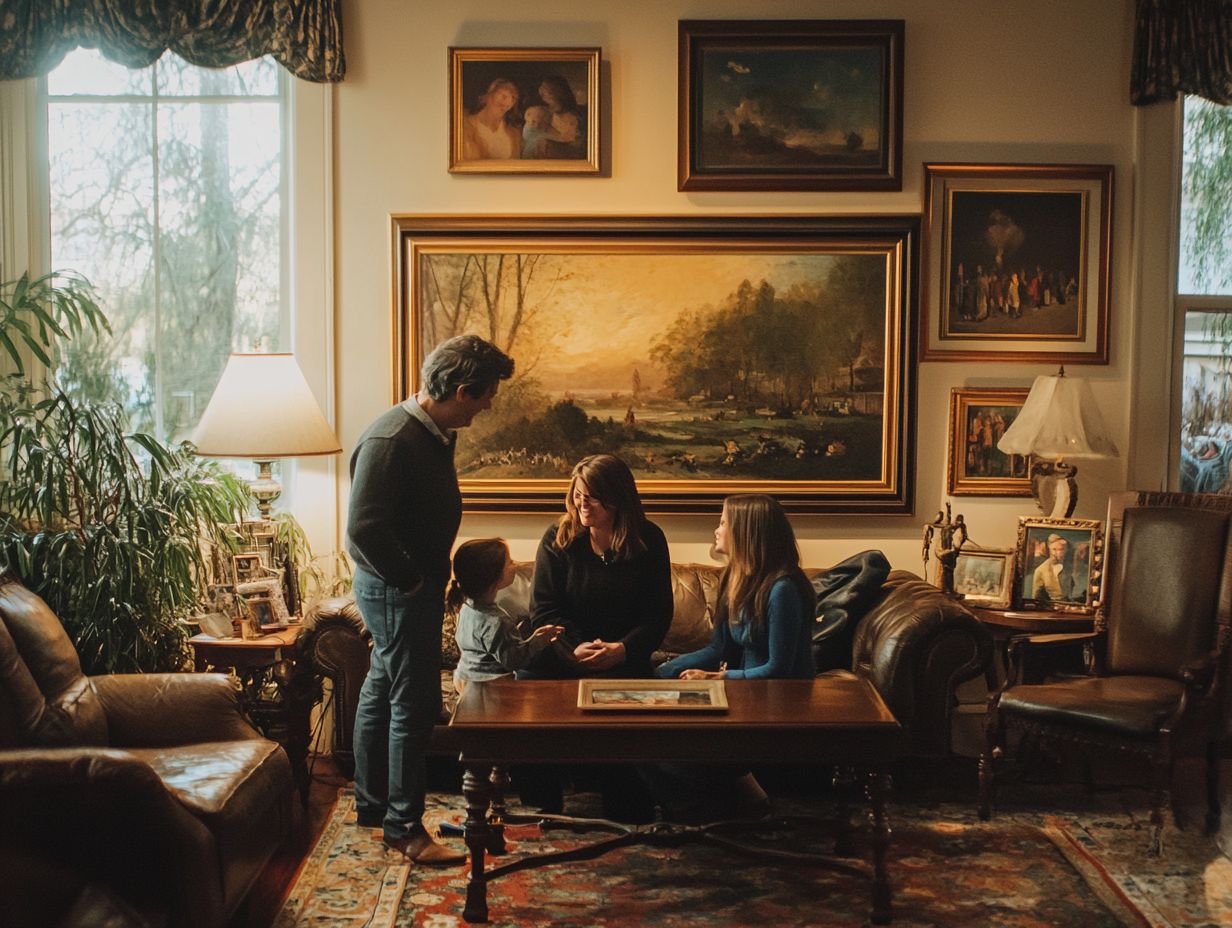
Effective budgeting is crucial when starting your art collection. It enables you to strategically seek out pieces that align with your aesthetic preferences while keeping your finances in check.
Navigating the vibrant world of contemporary art requires mindful planning and flexibility. At art fairs, you ll often find diverse works from emerging artists across various price ranges, giving you the chance to acquire unique pieces without straining your budget.
Galleries can also serve as invaluable allies; many host exhibitions focused on affordable contemporary artworks. This allows you to immerse yourself in visually captivating experiences while ensuring your purchases reflect your personal taste.
Explore local artist collectives for unique creations at better prices. This approach helps you curate a diverse collection that resonates with you personally while maintaining financial balance.
Preserving and Displaying Your Art Collection
Preserving and showcasing your art collection is essential for safeguarding the integrity and value of the artworks.
By investing in proper care and maintenance, you enhance the aesthetic experience and cultivate a deeper, more meaningful connection with your collection.
Proper Care and Maintenance
Proper care and maintenance of your artworks are essential for preserving both your emotional connections and their physical integrity.
Understanding the specific methods for handling, displaying, and storing various types of art can significantly enhance the longevity of these cherished items.
For instance, using special glass that protects your art from harmful sunlight can shield your paintings. Carefully adjusting humidity and temperature levels in your display area is crucial for protecting delicate materials like paper or canvas.
Regular cleaning with the right tools keeps your artworks visually appealing and reinforces the emotional value they hold for you.
Ultimately, each thoughtful action you take reflects a profound appreciation for the art, strengthening the bond between you and your carefully curated collection.
Frequently Asked Questions
What is ‘Art Collecting: A Family Tradition’?
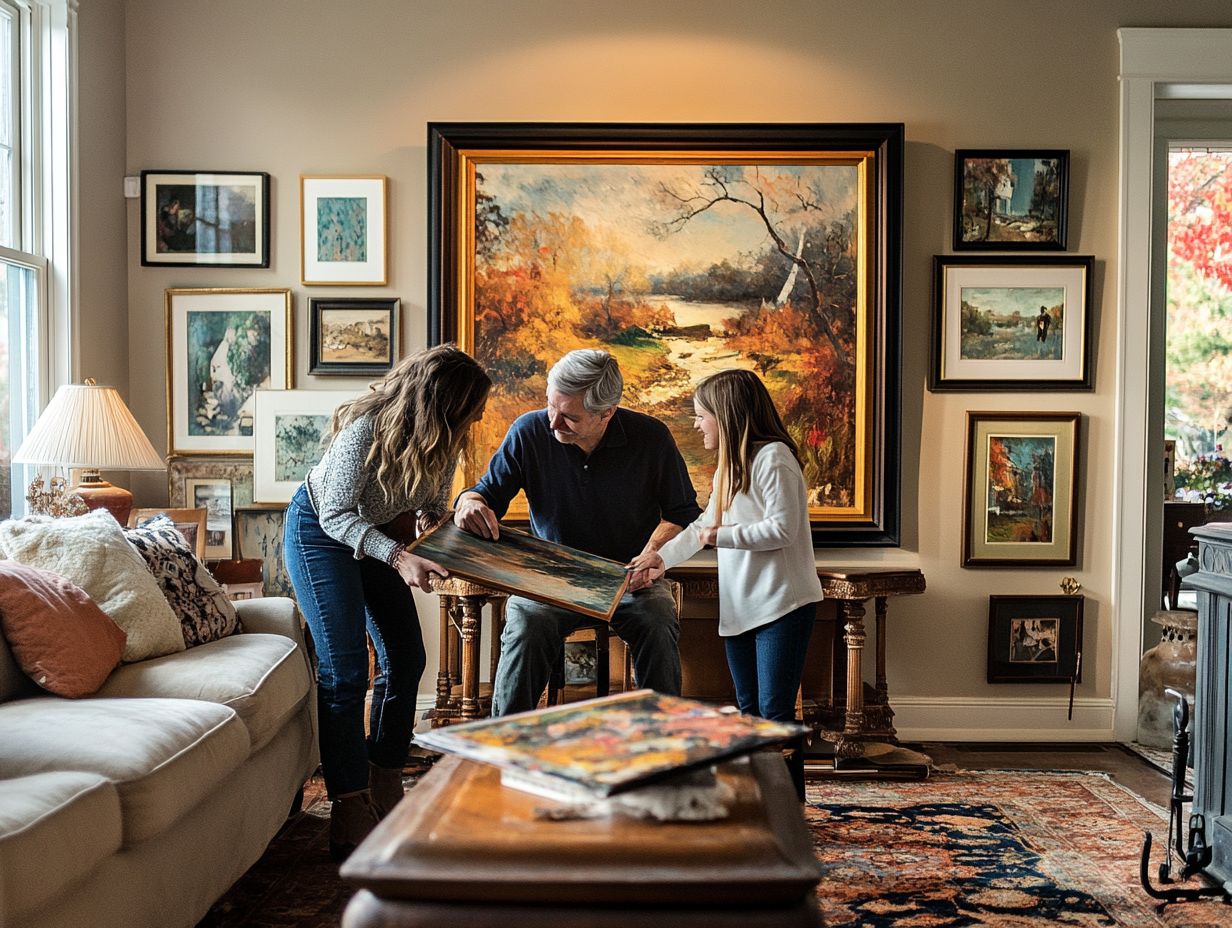
‘Art Collecting: A Family Tradition’ refers to the practice of collecting art as a family, often passed down from generation to generation. It s a way for families to bond over a shared passion for art and to create a legacy of appreciation for beauty and creativity.
How does ‘Art Collecting: A Family Tradition’ start?
‘Art Collecting: A Family Tradition’ begins in different ways. Some families have a rich history of collecting art, while others start with a single piece that holds special meaning.
It typically grows from a shared love and appreciation for art.
What are the benefits of ‘Art Collecting: A Family Tradition’?
This tradition strengthens family bonds and encourages creativity. It also connects families to their cultural and historical roots.
A collection can become a unique family legacy passed down for generations!
Can anyone start ‘Art Collecting: A Family Tradition’?
Absolutely! Anyone can embark on this journey, regardless of age or budget. As long as there s a shared love for art, families can contribute in various ways, including donations or creating their own artworks.
What are some tips for starting ‘Art Collecting: A Family Tradition’?
Start by setting a budget and defining what your family values in art. Research different styles and involve everyone in choosing pieces.
Keep communication open and welcome different tastes within the family!
How can ‘Art Collecting: A Family Tradition’ be passed down to future generations?
Involve younger family members from the start. Teach them about various art styles and nurture their love for art.
Document the collection and its history so future generations can appreciate its significance!


